Abstract
1. Test meals of 750 ml. water containing a range of concentrations of hydrochloric, nitric, sulphuric, cyclamic (cyclohexylsulphamic), tartaric, L-ascorbic and citric acids were instilled into the stomachs of sixteen healthy subjects.
2. The greater the concentration of an acid in the instilled meal, the greater was the volume of meal recovered after a fixed interval.
3. For the weak acids, tartaric, ascorbic and citric, the concentrations which gave a recovery of 450 ml., out of the 750 ml. instilled, increased with increase in the molecular weight of the acid.
4. For the strong acids, hydrochloric, nitric, sulphuric and cyclamic, the concentrations which gave a recovery of 450 ml., out of the 750 ml. instilled, were approximately equal. These concentrations were less than those for weak acids.
5. The strong acids with high molecular weights were slightly more effective in slowing gastric emptying than were those with low molecular weights.
6. The approximate equality of effectiveness of nitric, sulphuric and cyclamic acids to hydrochloric acid is attributed to the presence of chloride ion in the duodenal contents. Thus all the strong acids instilled produce an environment of hydrochloric acid around the receptor.
7. A model for a duodenal receptor responding to acids is proposed.
Full text
PDF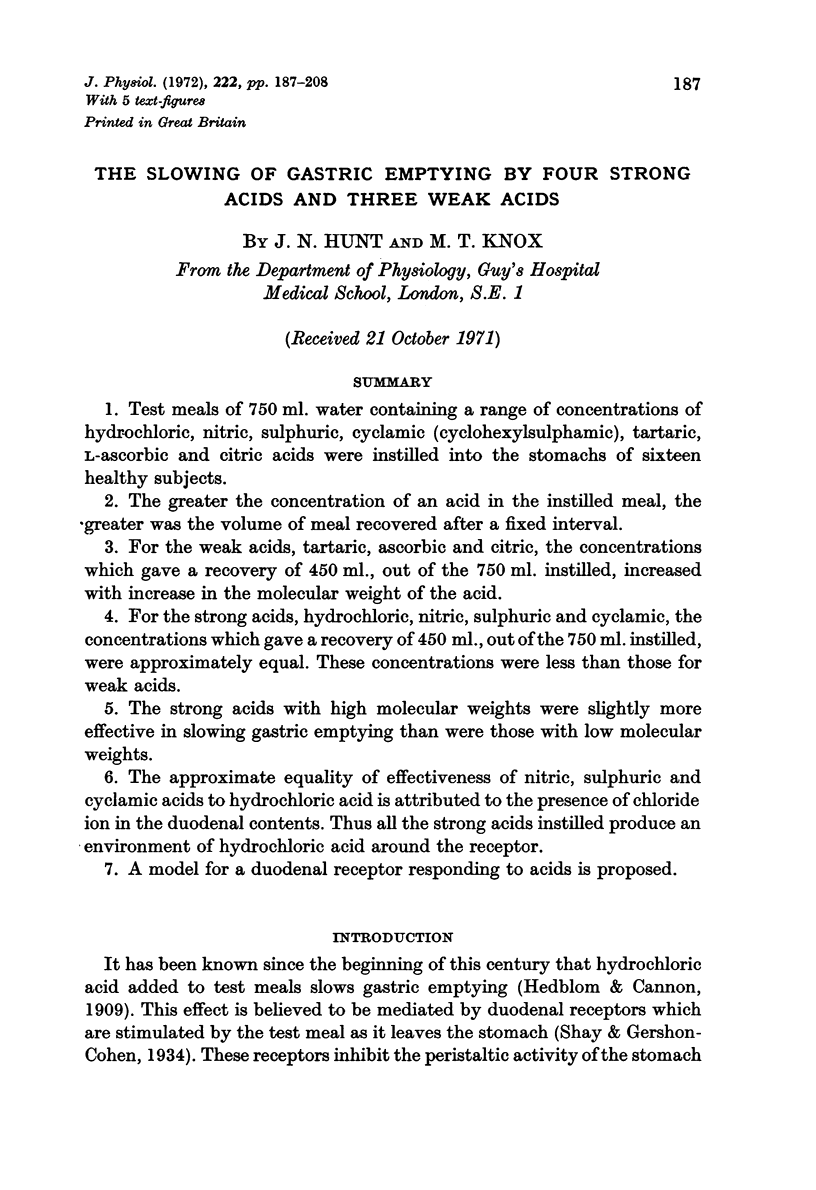

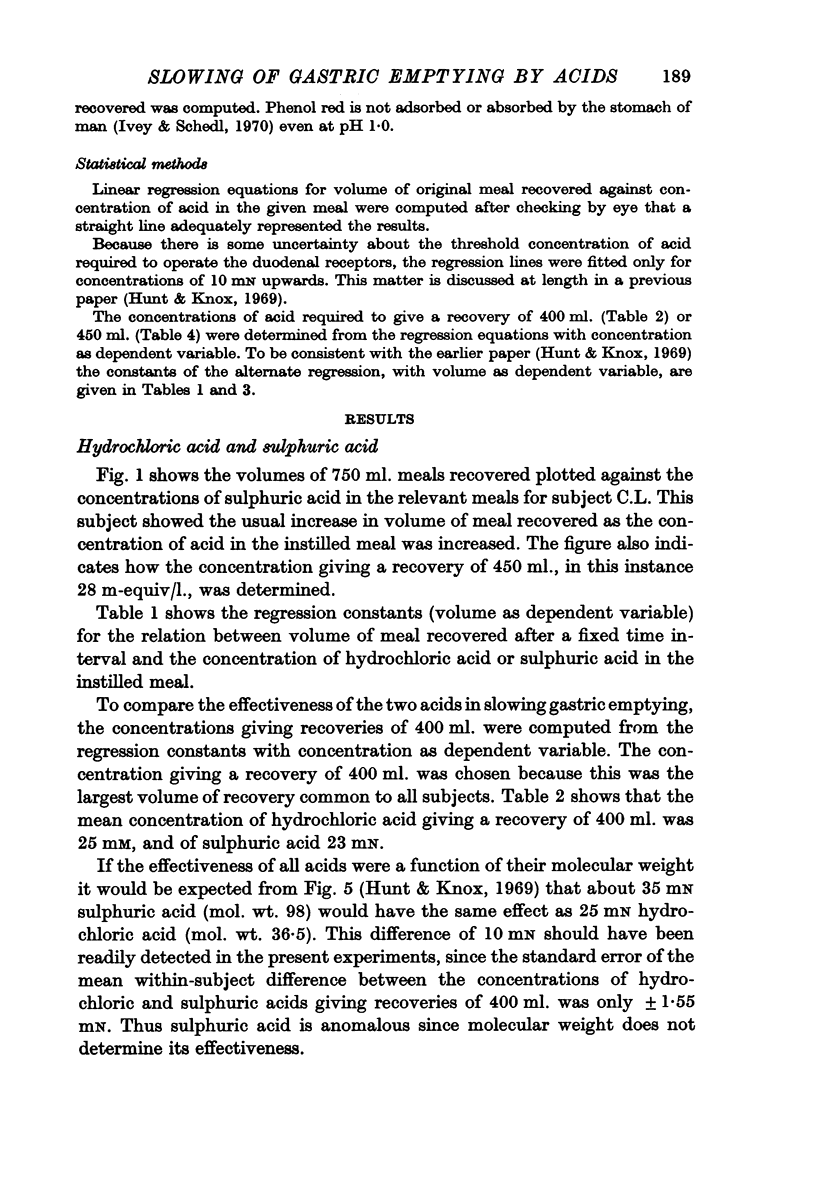

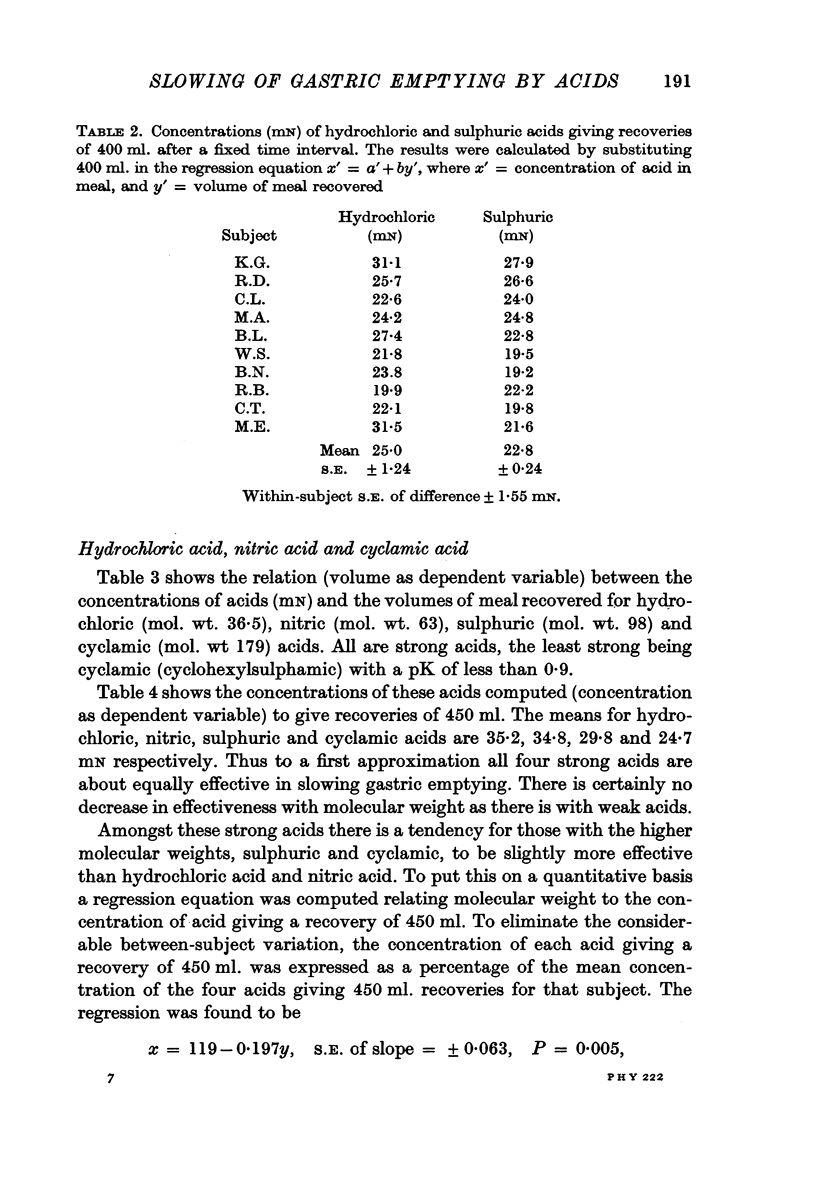
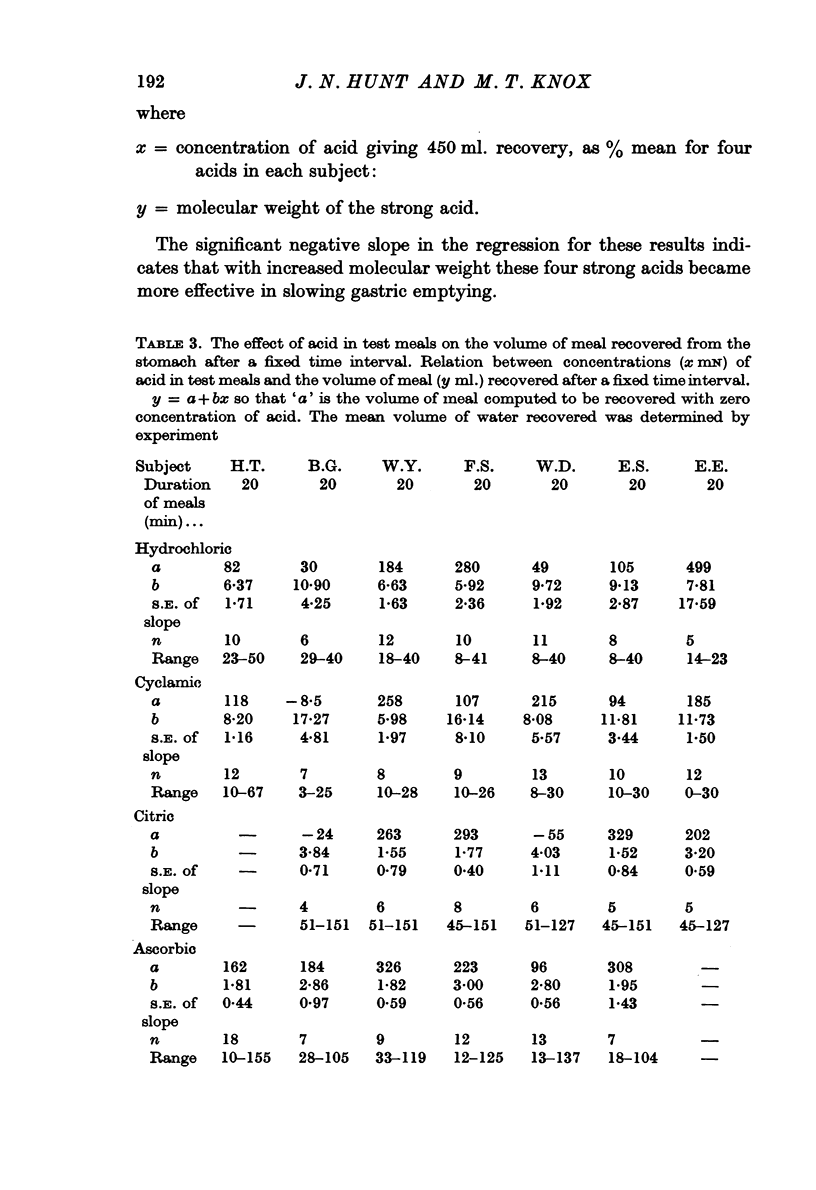
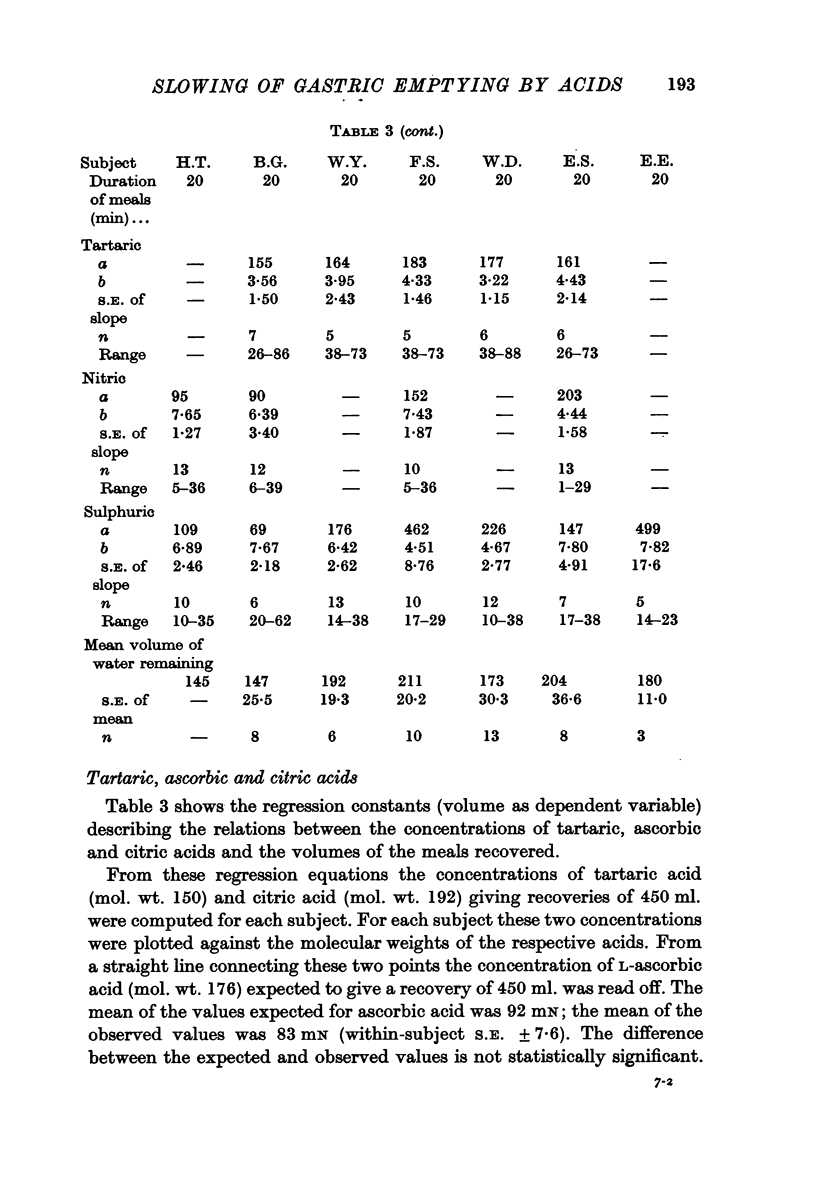
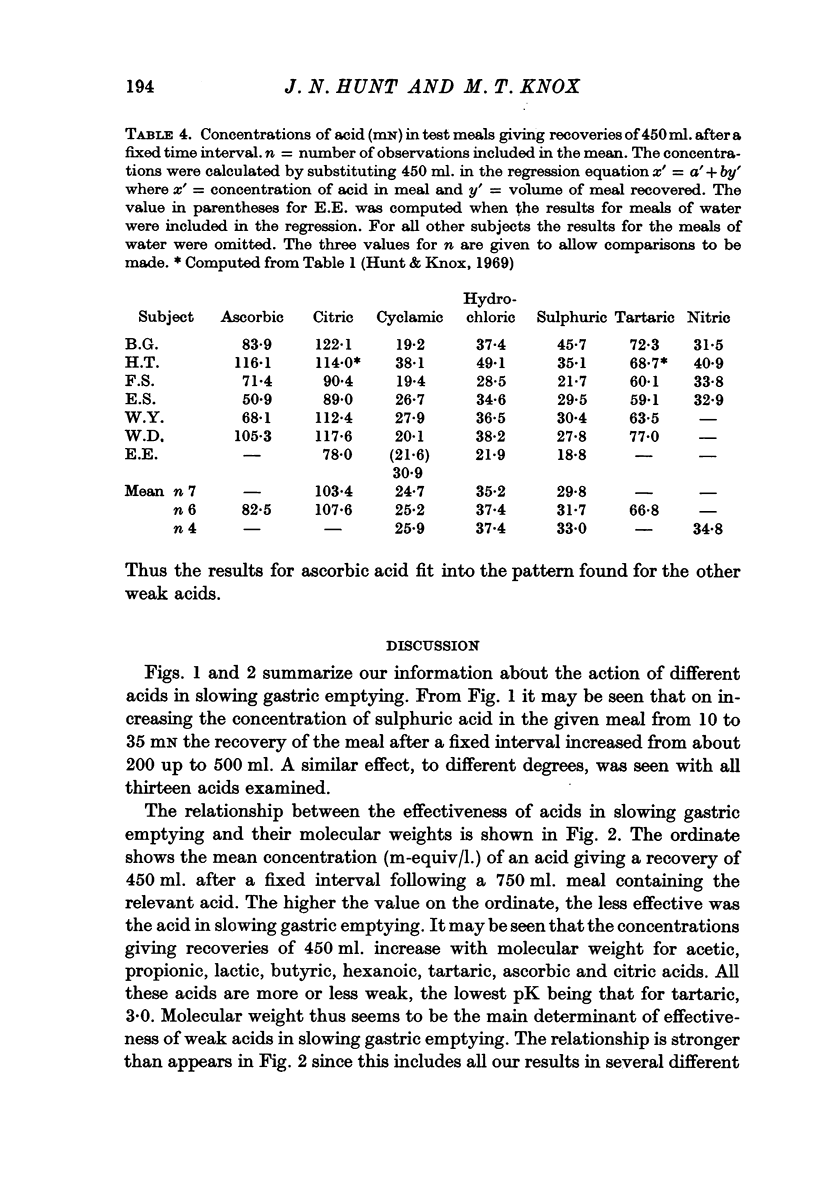
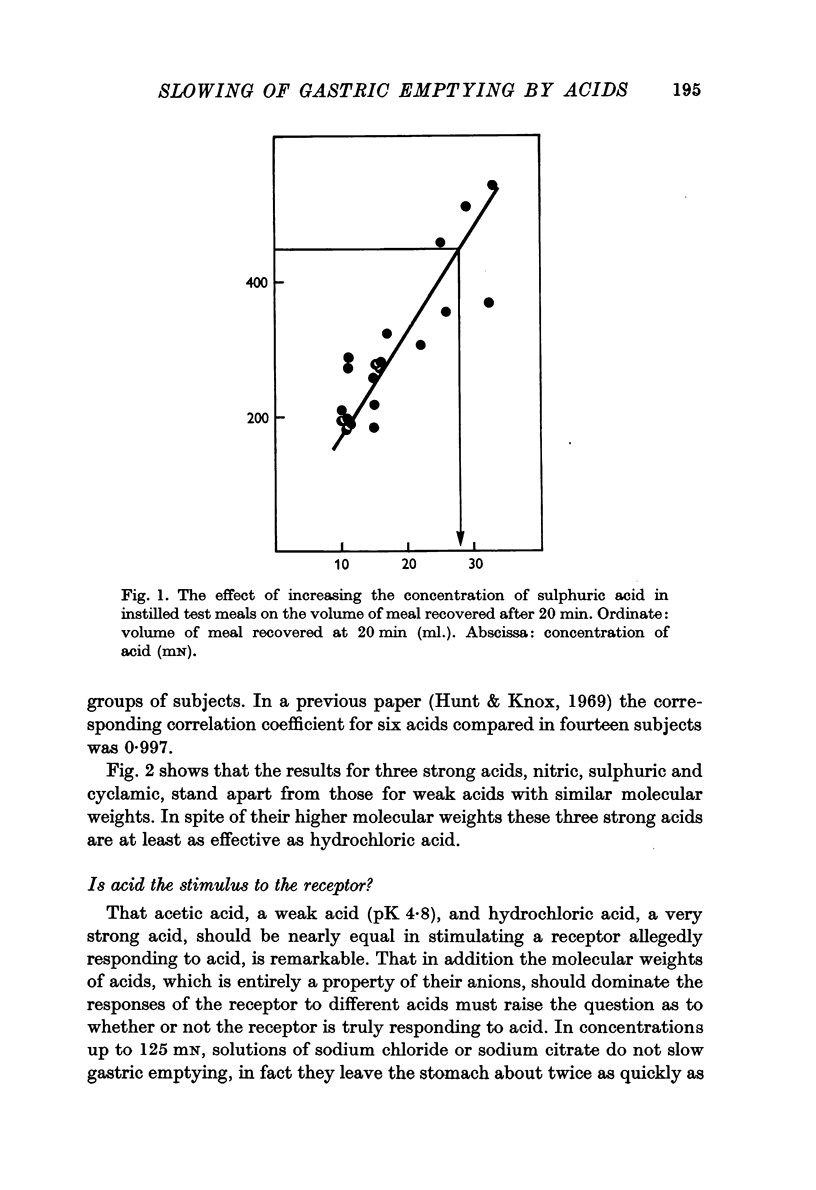
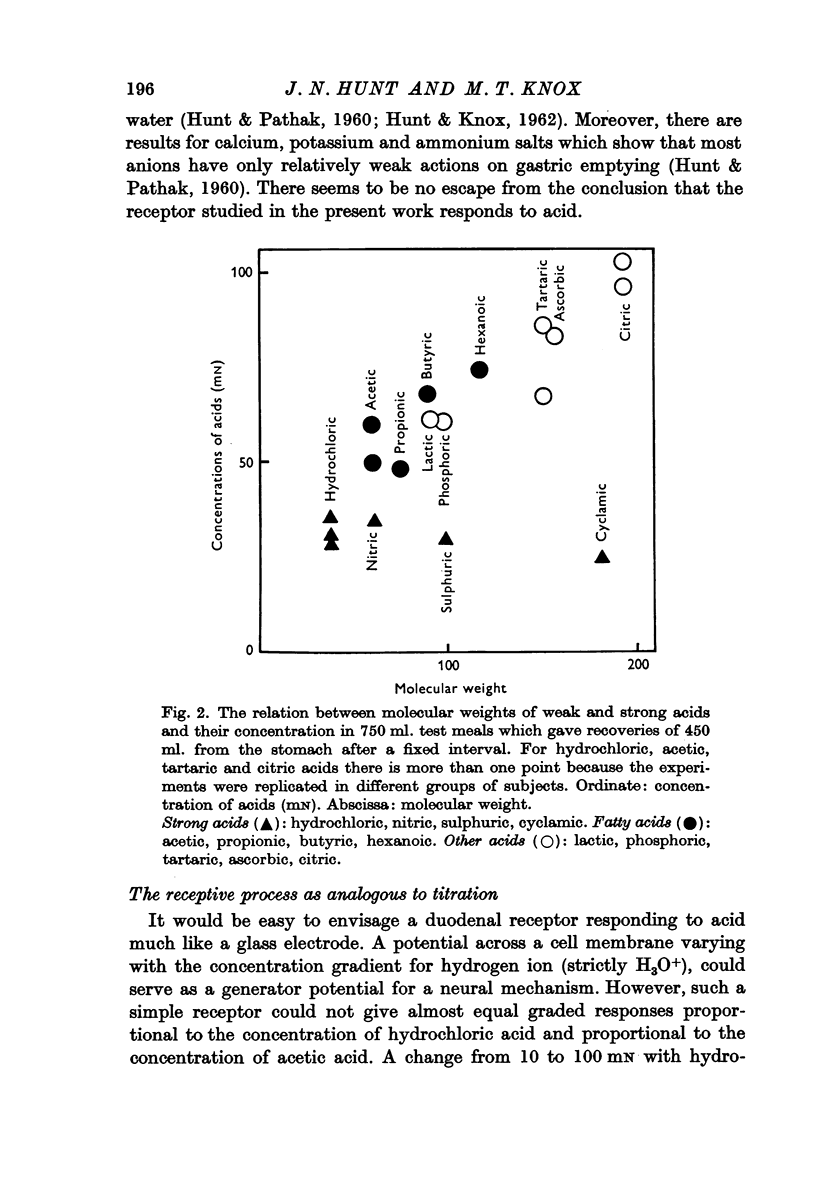
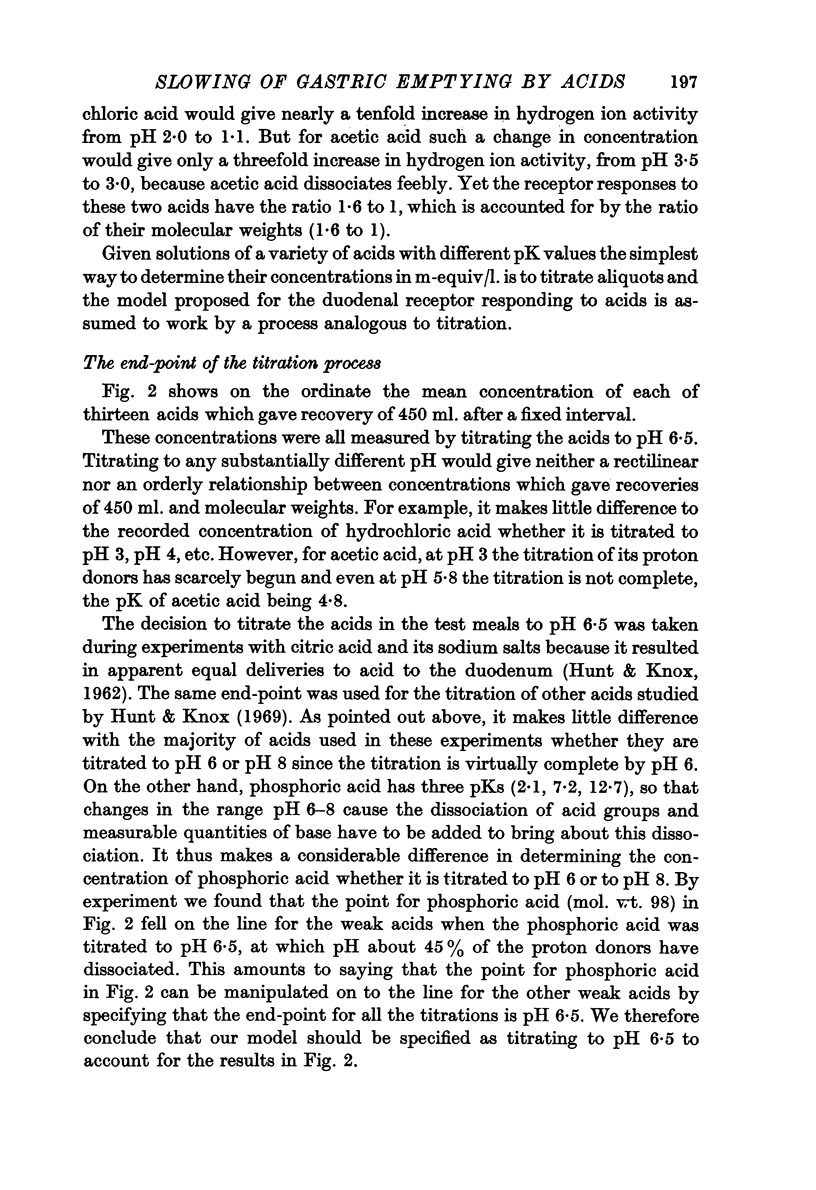
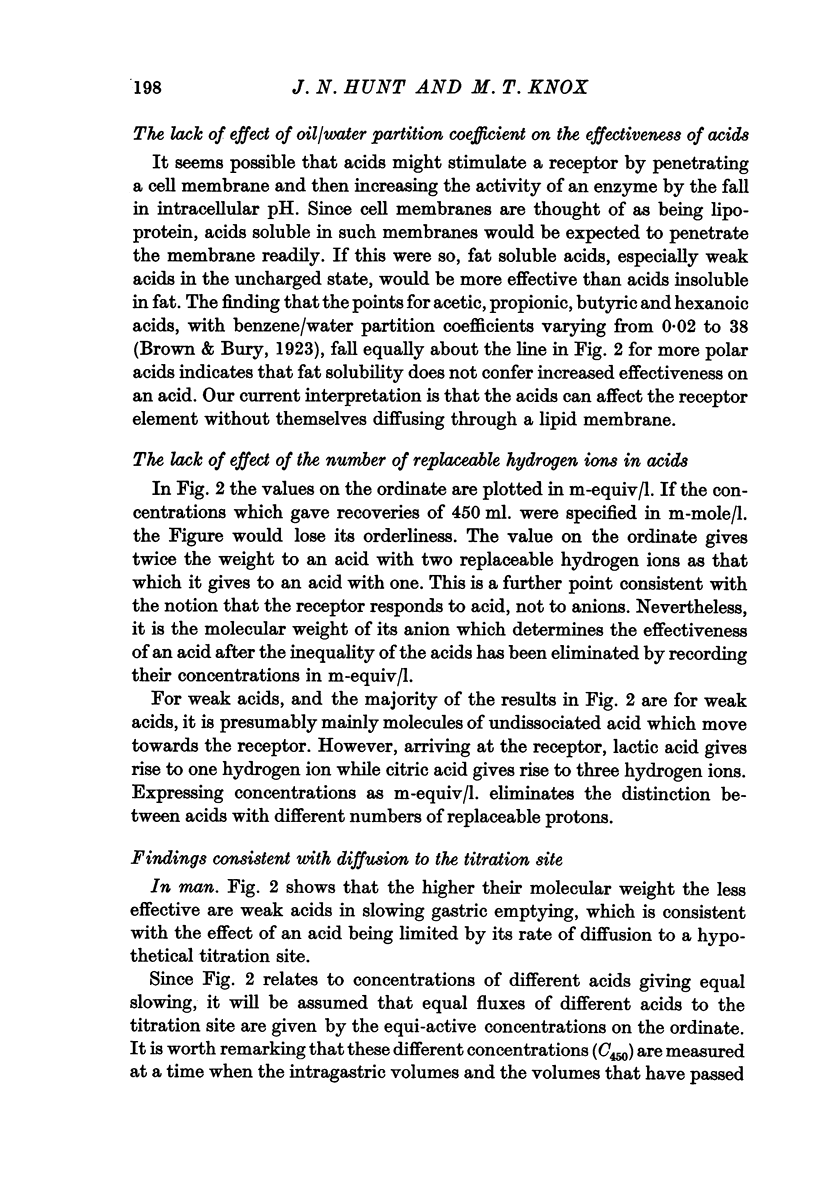
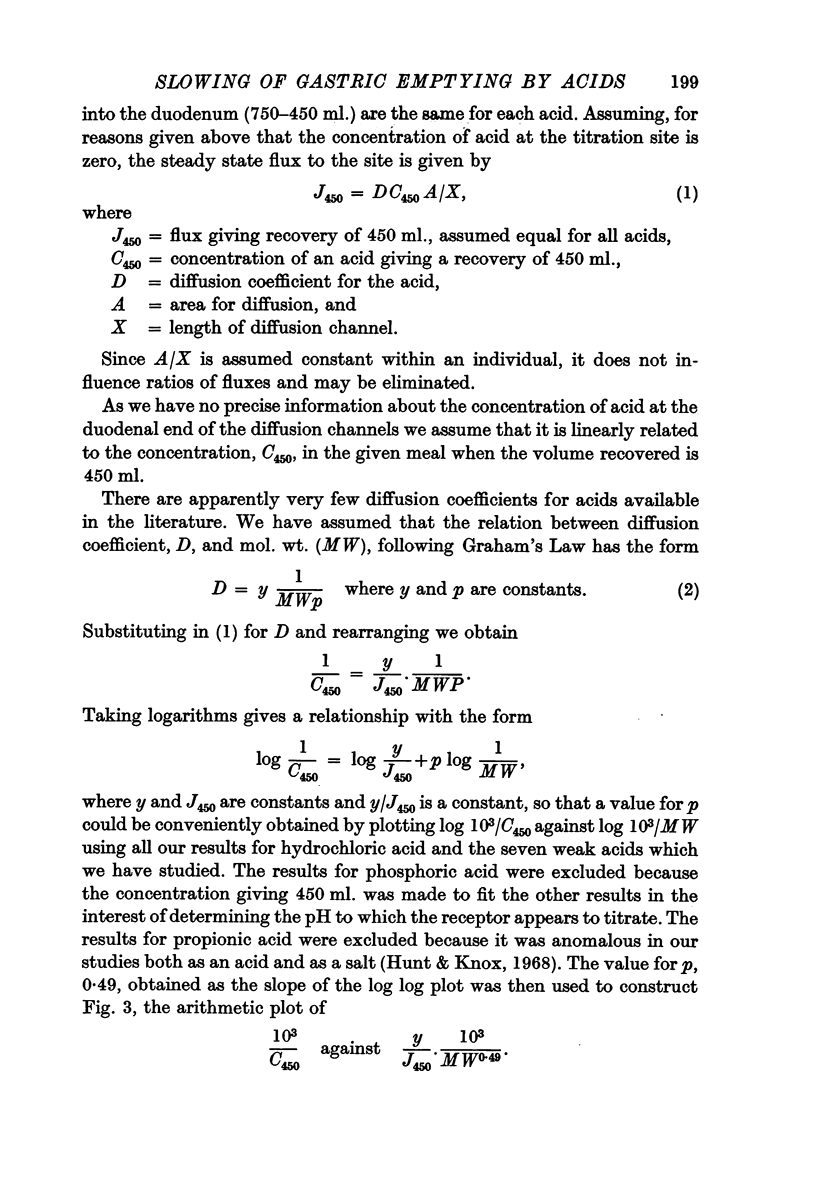
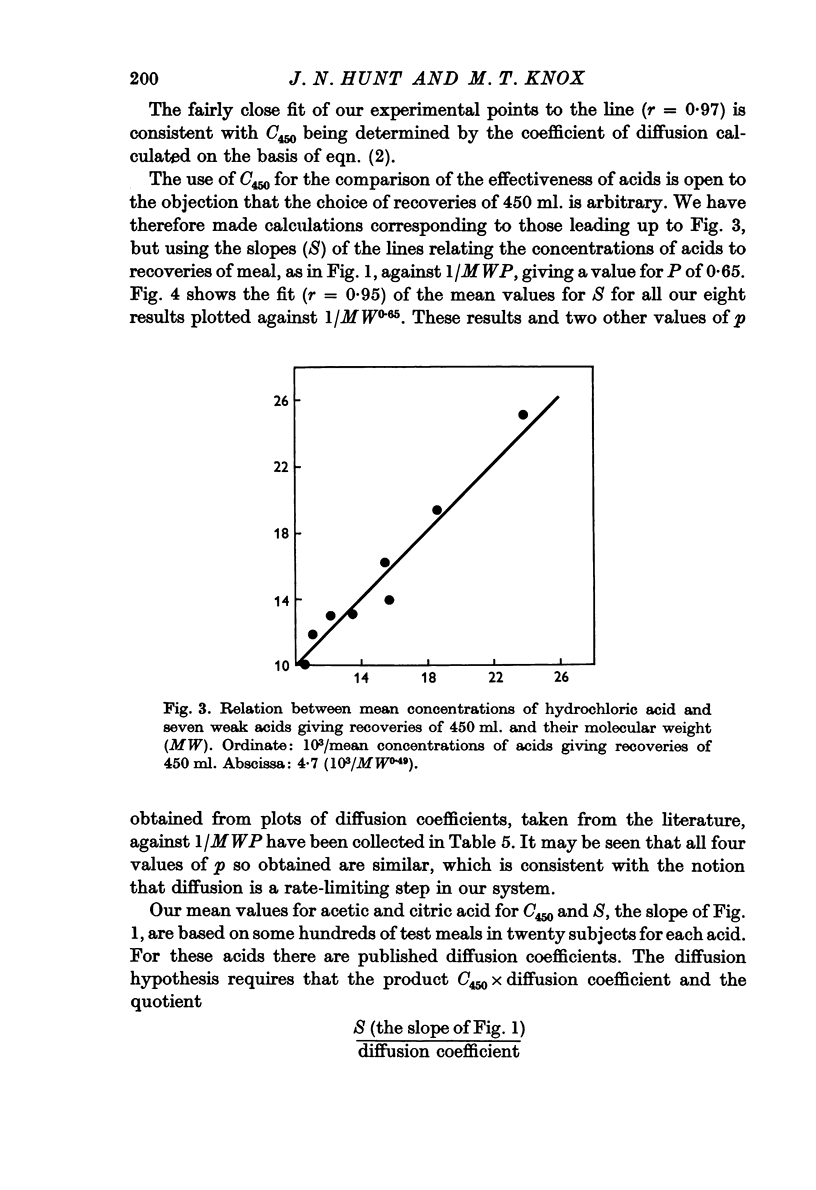
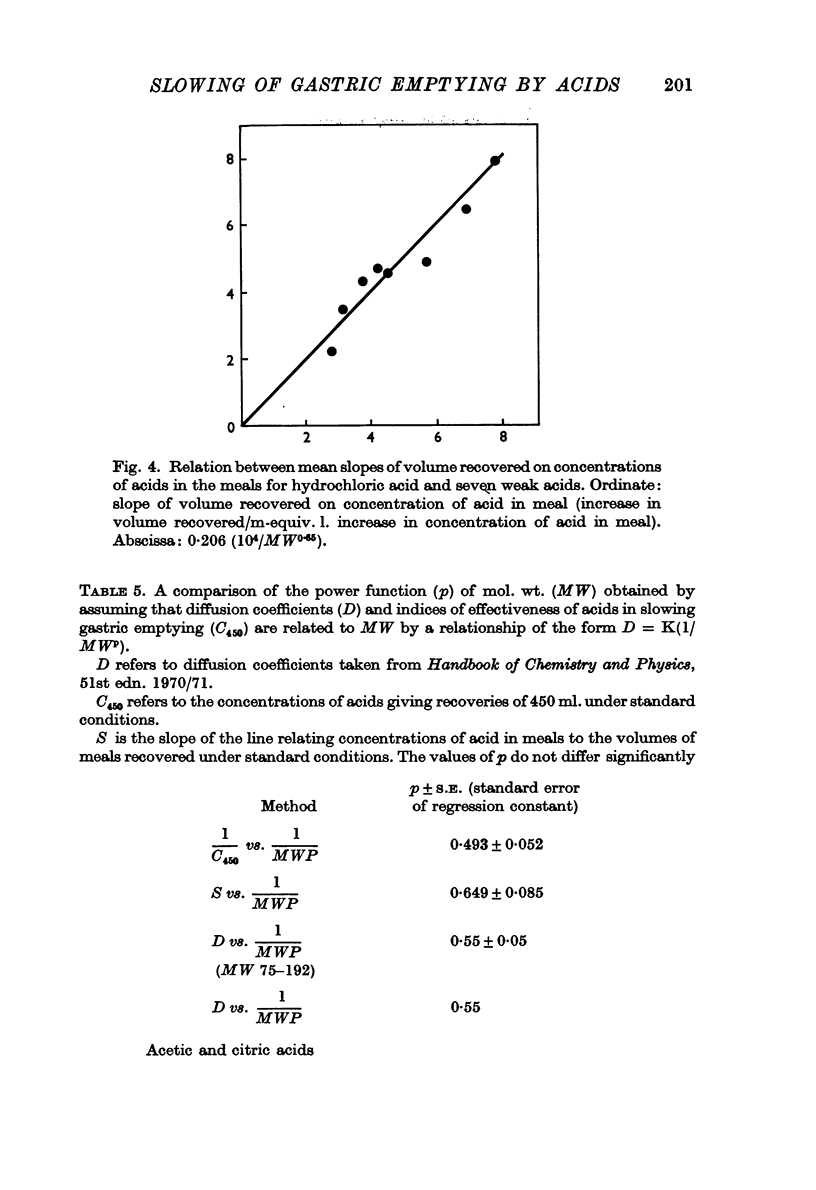
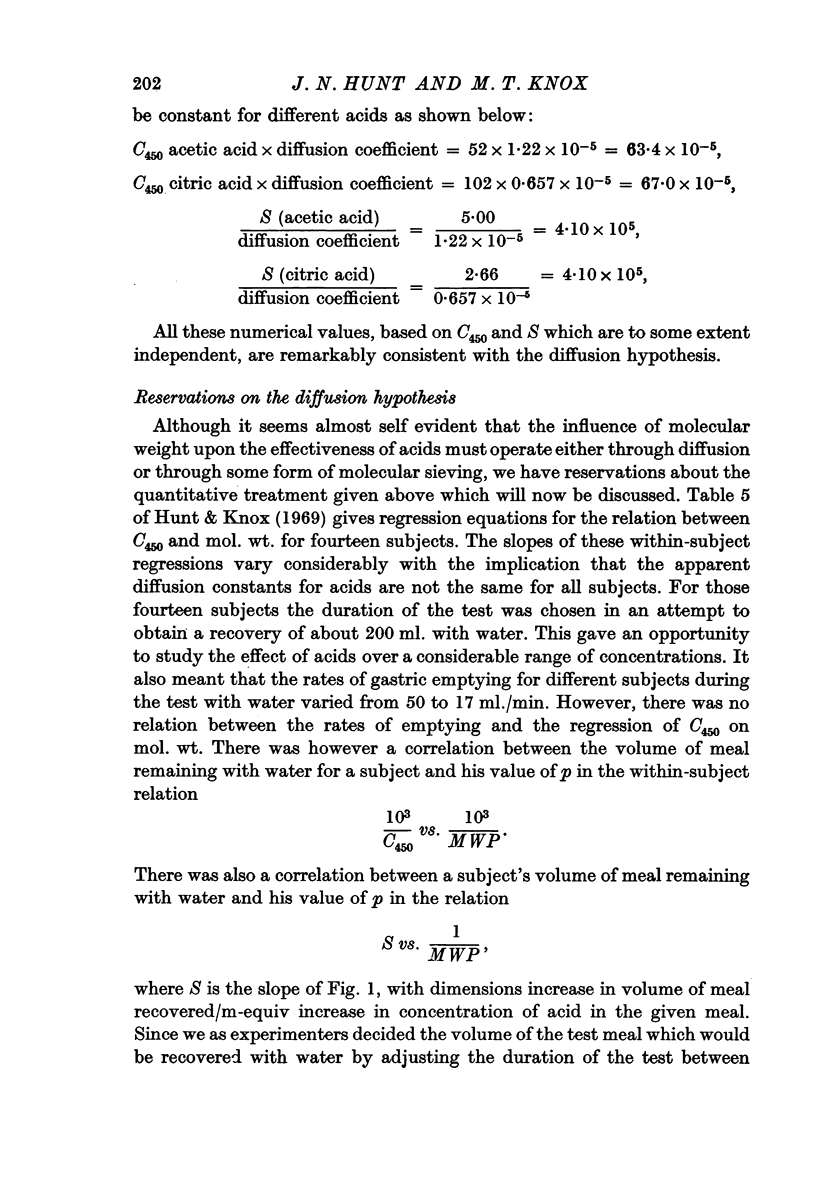
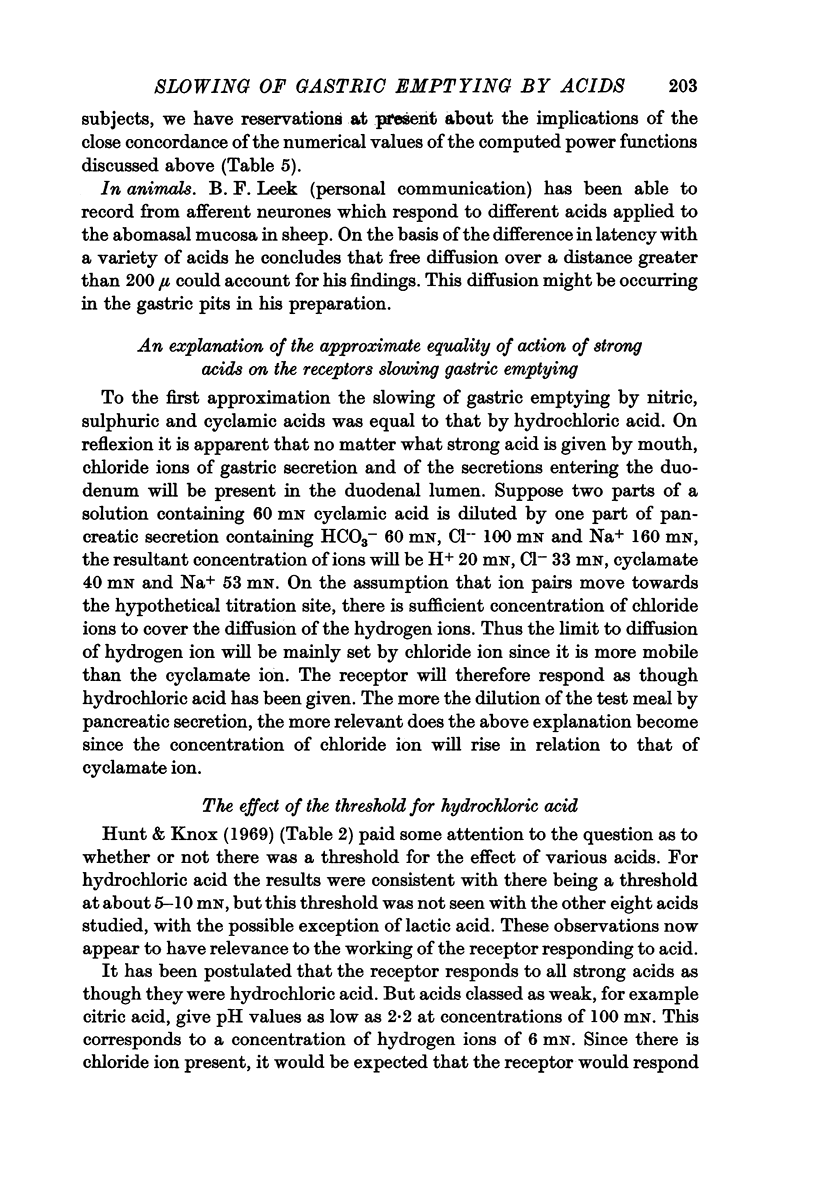
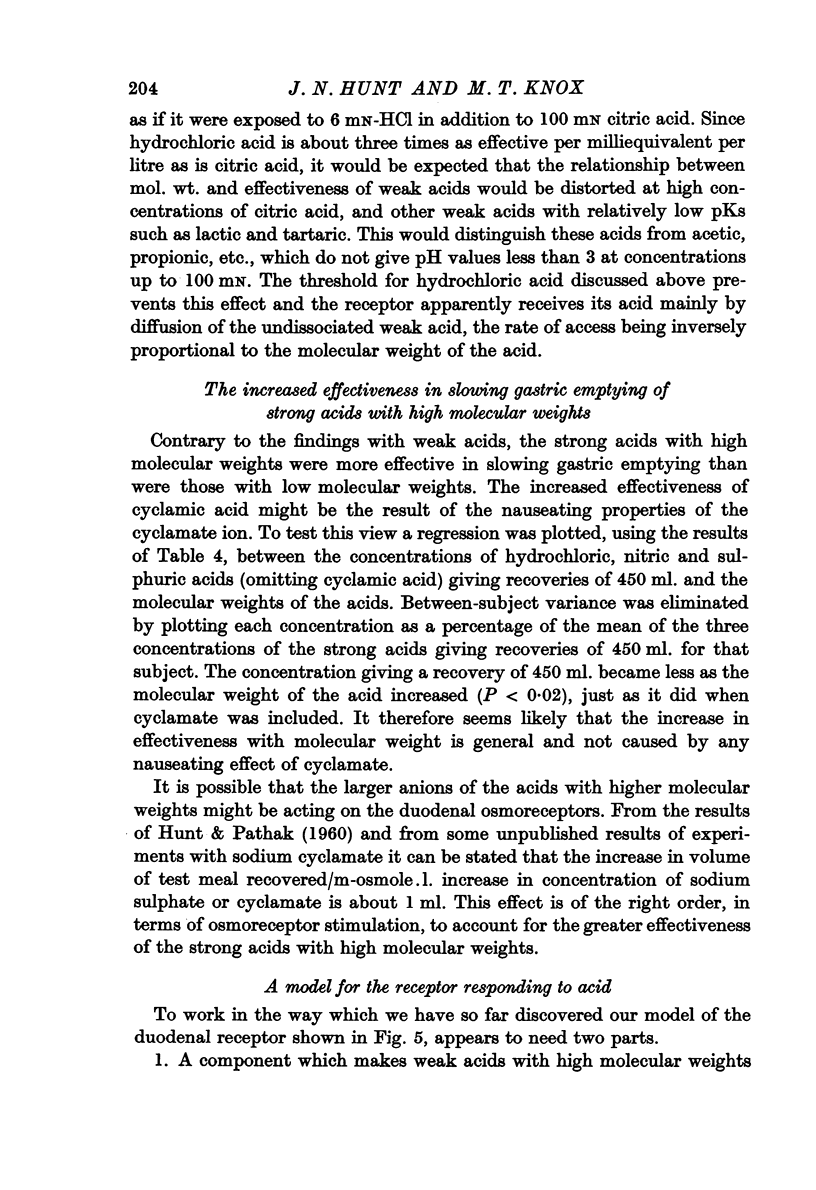
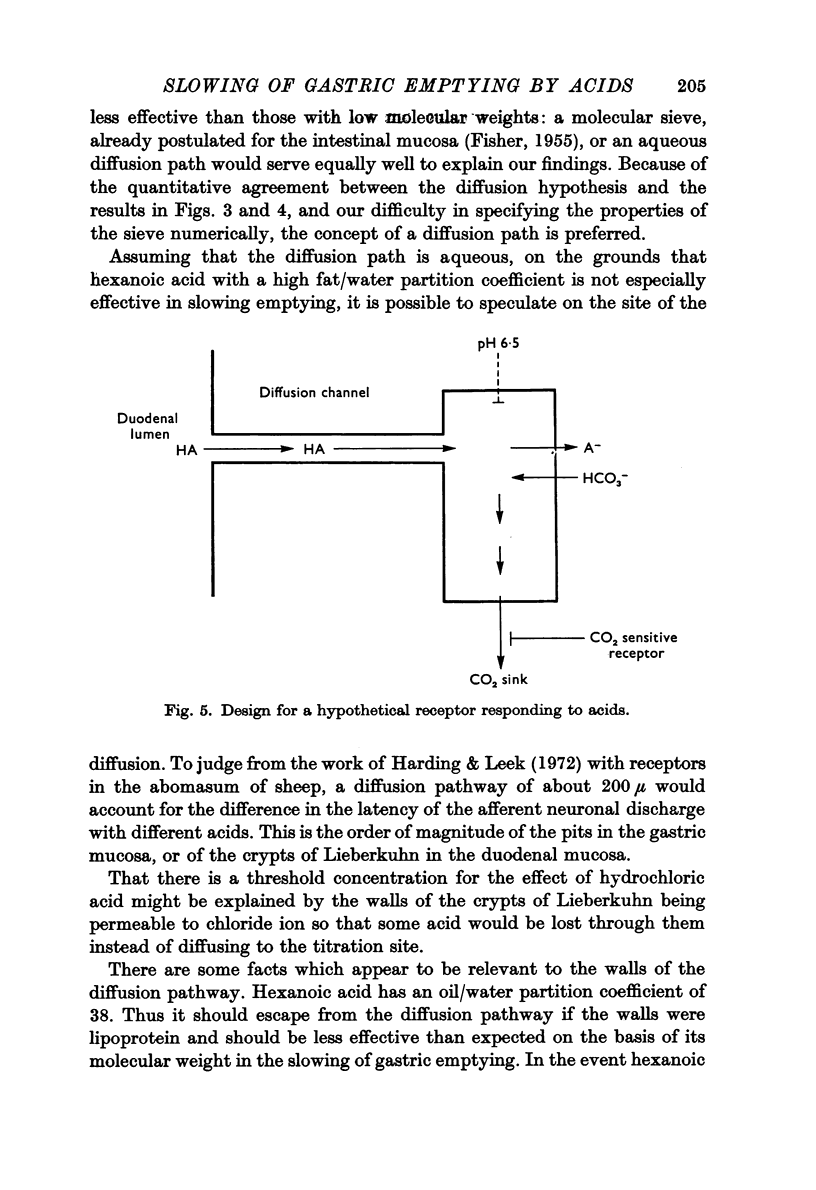
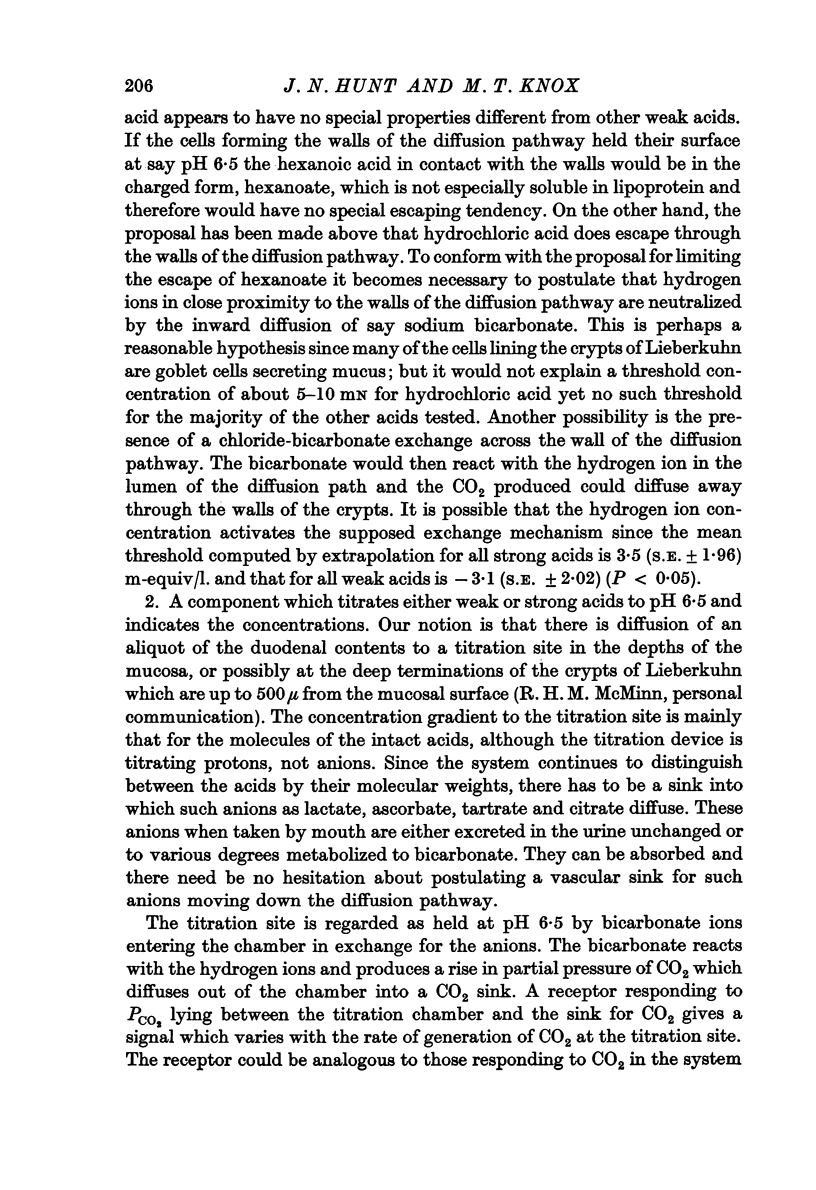
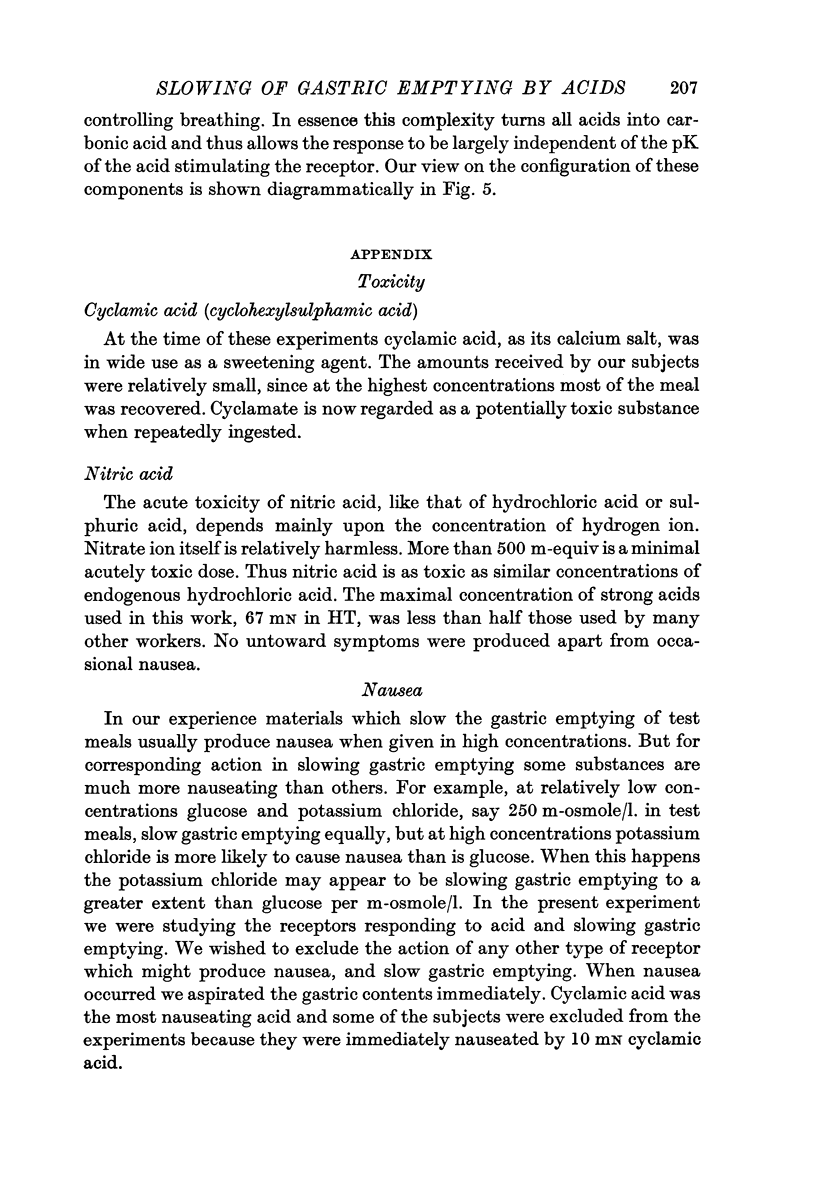
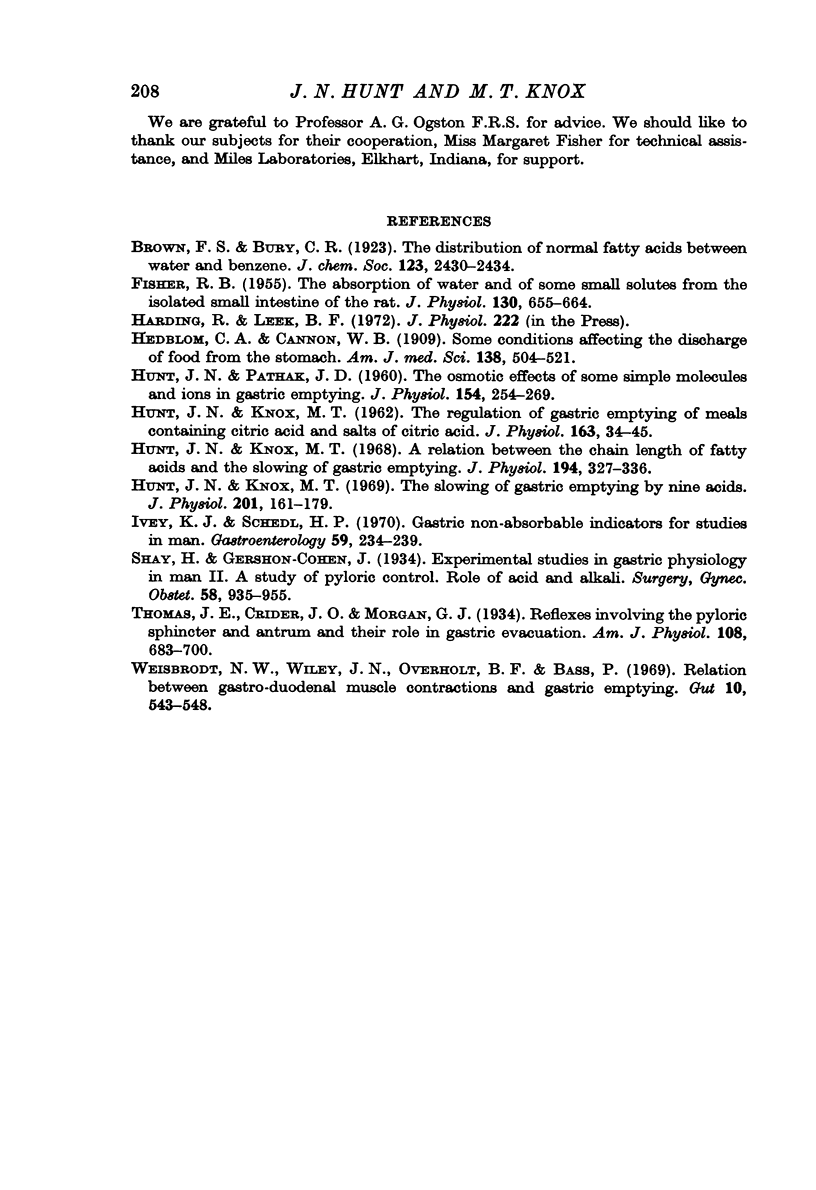
Selected References
These references are in PubMed. This may not be the complete list of references from this article.
- FISHER R. B. The absorption of water and of some small solute molecules from the isolated small intestine of the rat. J Physiol. 1955 Dec 29;130(3):655–664. doi: 10.1113/jphysiol.1955.sp005433. [DOI] [PMC free article] [PubMed] [Google Scholar]
- HUNT J. N., KNOX M. T. The regulation of gastric emptying of meals containing citric acid and salts of citric acid. J Physiol. 1962 Aug;163:34–45. doi: 10.1113/jphysiol.1962.sp006957. [DOI] [PMC free article] [PubMed] [Google Scholar]
- Hunt J. N., Knox M. T. A relation between the chain length of fatty acids and the slowing of gastric emptying. J Physiol. 1968 Feb;194(2):327–336. doi: 10.1113/jphysiol.1968.sp008411. [DOI] [PMC free article] [PubMed] [Google Scholar]
- Hunt J. N., Knox M. T. The slowing of gastric emptying by nine acids. J Physiol. 1969 Mar;201(1):161–179. doi: 10.1113/jphysiol.1969.sp008749. [DOI] [PMC free article] [PubMed] [Google Scholar]
- Hunt J. N., Pathak J. D. The osmotic effects of some simple molecules and ions on gastric emptying. J Physiol. 1960 Dec;154(2):254–269. doi: 10.1113/jphysiol.1960.sp006577. [DOI] [PMC free article] [PubMed] [Google Scholar]
- Ivey K. J., Schedl H. P. Gastric nonabsorbable indicators for studies in man. Gastroenterology. 1970 Aug;59(2):234–239. [PubMed] [Google Scholar]
- Weisbrodt N. W., Wiley J. N., Overholt B. F., Bass P. A relation between gastroduodenal muscle contractions and gastric empyting. Gut. 1969 Jul;10(7):543–548. doi: 10.1136/gut.10.7.543. [DOI] [PMC free article] [PubMed] [Google Scholar]


